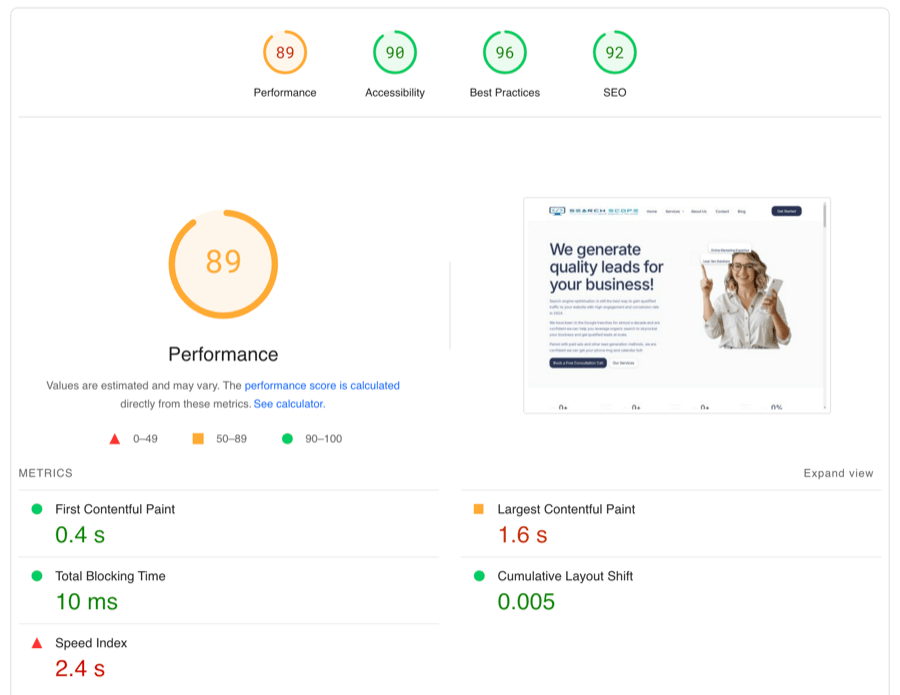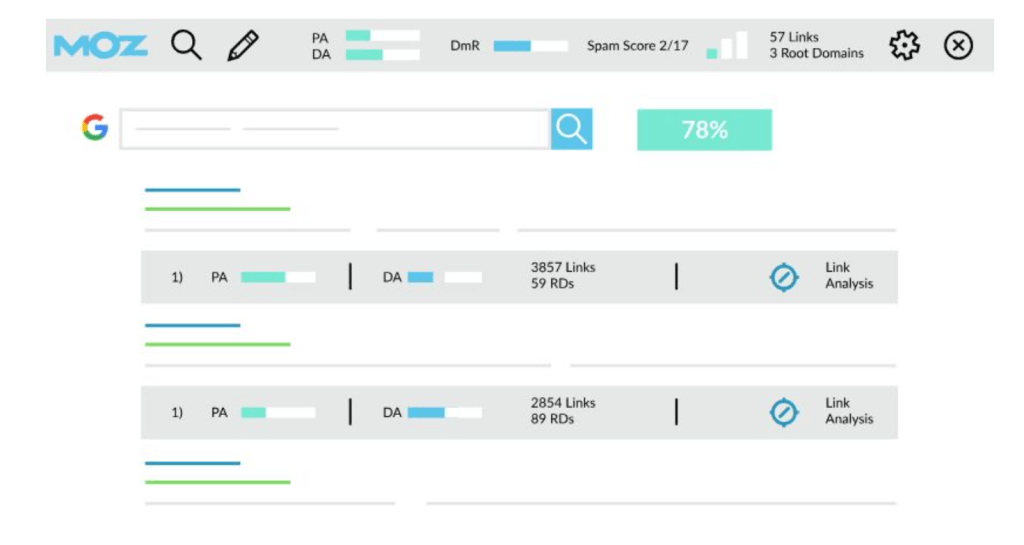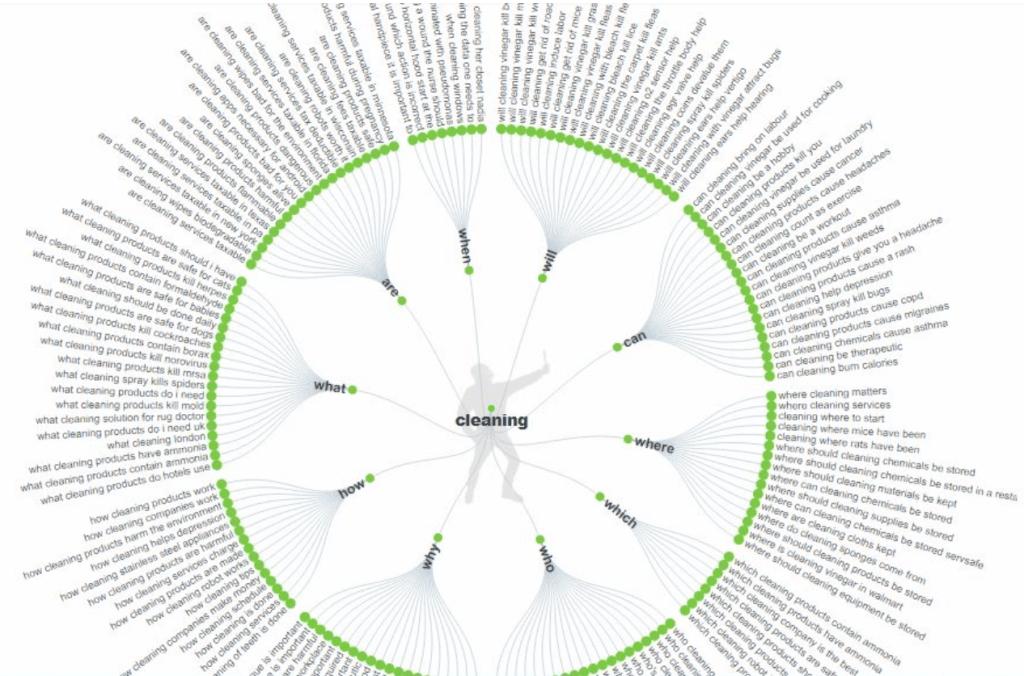Voice Search Optimisation: The Hidden Opportunity Perth Businesses Are Missing

Last Updated on 1 October 2025 by Dorian Menard
You’ve probably seen how customers now just ask Siri or Google Assistant for recommendations instead of typing. For many Perth businesses, this shift to voice search feels like a threat, but I see it as the single biggest untapped opportunity in our local market.
This article is for Perth business owners who want a clear, no-fluff plan to get found by customers using voice search. In my work with hundreds of local companies through Search Scope, I’ve seen firsthand that a few focused adjustments can make you the go-to answer for voice assistants. We will cover the technical and content strategies that directly lead to more calls, bookings, and foot traffic from voice queries.
TL;DR: Your Quick Guide to Voice Search Wins
- Focus on Speed: Your site must load in under 2 seconds. Tools like Google’s PageSpeed Insights will show you how.
- Answer Questions Directly: Structure your content to answer common customer questions in a conversational tone.
- Master Local SEO: An optimised Google Business Profile is the foundation of local voice search success.
- Use Schema Markup: Add structured data (or “schema”) to your site so search engines can understand your business details perfectly.
What Are the Most Important Voice Search Ranking Factors?
To get your Perth business visible in voice search, you need a strategy. These are the 10 factors that my team has found deliver the best results when providing affordable SEO in Perth.
Think of them as your checklist for getting ahead of the competition.
- Website Loading Speed
- Domain Authority and Local Signals
- Meta Tag and Schema Optimisation
- Featured Snippet and Rich Result Implementation
- Mobile-First Design and Usability
- FAQ Section and Conversational Content
- Localised Image Optimisation
- Long-Tail and Question-Based Keywords
- Google Business Profile Management
- HTTPS and Website Security
Let’s break down how to handle each one effectively.
1. Why is Website Speed So Important for Voice Search?
Voice assistants need to deliver answers instantly. A slow website simply won’t be chosen by Google or Siri when a faster competitor exists.
For Perth businesses, our distance from major data centres can already be a slight disadvantage. That’s why you need to ensure your website is incredibly fast to compensate.
How to Improve Your Website Speed
- Use a Quality Host: Choose an Australian-based hosting provider like VentraIP or use a global provider with Sydney servers like SiteGround to reduce latency.
- Implement Caching: Use a caching plugin like WP Rocket. This stores a static version of your site, so it doesn’t have to rebuild it for every single visitor.
- Compress Files: Use tools like Gzip to make your website’s files smaller and faster to download.
- Optimise Images: Use a plugin like ShortPixel to compress images without losing quality, ensuring they load quickly even on slower mobile connections in regional WA.
- Minimise Code: Remove unnecessary characters and spaces from your code. This process, called minification, makes the files lighter.

2. Building Domain Authority with a Local Focus
Domain Authority (DA) is a score developed by Moz that predicts how likely a website is to rank. For voice search, Google relies on trusted, authoritative sites to provide answers.
For a Perth business, this means becoming a recognised authority on local topics, not just your services.
Practical Steps to Build Local Authority
- Create Locally Relevant Content: Write blog posts about Perth-specific topics. A Fremantle plumber could write about managing saltwater corrosion in pipes, while a Subiaco cafe could blog about the best dog-friendly parks nearby.
- Get Local Backlinks: Earn links from other reputable Perth websites. Sponsoring a local sporting team like the Perth Wildcats or being featured on a blog like Perth is OK! are great ways to get relevant, high-authority links.
- Clean Up Toxic Links: Use a tool like Semrush or Ahrefs to find and disavow spammy, low-quality links that could be harming your reputation with Google.
- Improve Internal Linking: Make sure your most important pages are linked to from other pages on your site. This helps Google understand your site structure and what you consider important.

3. How Do Meta Tags and Schema Help Voice Search?
Meta tags and schema markup are pieces of code that help search engines understand your content’s context. For voice search, this is non-negotiable because it allows an algorithm to quickly verify your business details.
Essential Markup for Perth Businesses
- Conversational Meta Descriptions: Write your meta descriptions as if you were answering a question. This short snippet is often what a voice assistant will read back to the user.
- Local Business Schema: This is one of the most powerful tools for local voice search. You can explicitly tell Google your business name, address, phone number, opening hours, and service area. You can find out more about implementing local schema markup to get started.
- FAQ Schema: If you have an FAQ page, marking it up with FAQ schema can get your answers read aloud directly by voice assistants.
4. Capturing Featured Snippets (Position Zero)
The featured snippet is the answer box that often appears at the very top of Google’s results. According to a study by Backlinko, a high percentage of voice search answers come directly from these snippets.
Your goal is to become that featured answer.
How to Win Featured Snippets in Perth
- Target Question-Based Queries: Use tools like AnswerThePublic to find what questions your customers are asking. Optimise for “best coffee in Joondalup” instead of just “cafe Joondalup.”
- Provide Direct Answers: Structure your content with a clear heading that asks the question (e.g., “What Are the School Catchment Areas in Mount Lawley?”). Follow it immediately with a short, concise paragraph that directly answers it.
- Use Lists and Tables: For “how-to” guides or comparisons, format the content as a numbered list, bulleted list, or table. Google often pulls these directly into featured snippets.
5. What is Mobile-First Optimisation vs. Mobile-Friendly?
Most voice searches happen on smartphones. “Mobile-friendly” means your site works on mobile, but “mobile-first” means you design the experience for mobile users from the start.
Google predominantly uses the mobile version of your site for ranking and indexing, so this is essential.
- Responsive Design: Your website must automatically adapt to fit any screen size, from a small iPhone to a large tablet.
- Easy-to-Tap Buttons: Ensure buttons and links are large enough and spaced far enough apart to be easily tapped without accidental clicks.
- Simple Navigation: Menus should be clean and easy to use on a small screen. Test your site with Google’s Mobile-Friendly Test tool to identify any issues.

6. Developing an Effective FAQ Section
A well-structured FAQ page is a goldmine for voice search optimisation. It allows you to directly answer the specific questions your Perth customers are asking.
Each question and answer pair becomes a potential featured snippet.
- Answer Local Questions: Address queries specific to your area. For example, include questions about parking near your Victoria Park store or your service availability during a Perth heatwave.
- Think Conversational: Write the questions exactly how someone would ask them out loud. Use “What are your opening hours on public holidays?” instead of “Public holiday hours.”
- Implement FAQ Schema: As mentioned earlier, add FAQPage schema markup to this page. This makes it incredibly easy for Google to pull your Q&As for voice search results.
7. Image Optimisation for a Visual and Voice Audience
While voice search is audio-based, the answers are often pulled from pages that rank well in traditional search, where images play a big part. Optimised images help your page rank higher, making it more likely to be selected for a voice answer.
Simple Image Optimisation Checklist
- Use Descriptive File Names: Instead of “IMG_2025.jpg,” name your file “roofer-replacing-tiles-in-canning-vale.jpg.” This gives Google immediate context.
- Write Detailed Alt Text: The alt text should describe the image for visually impaired users. It’s also a key ranking signal. For an image of a coffee, write “A barista at our Perth CBD cafe pouring a flat white with latte art.”
- Compress Images: Use a tool like TinyPNG to reduce the file size, which helps your page load faster.
- Geotag Your Photos: Add location data (EXIF data) to your images before uploading them. This sends a strong local signal to Google that your business is genuinely based in Perth.
8. How to Find and Use Voice-Friendly Keywords
People speak differently than they type. Your keyword strategy needs to reflect this by targeting longer, more natural-sounding phrases.
Keyword Strategy: Text vs. Voice
| Traditional Text Keyword | Voice-Friendly Keyword |
|---|---|
| “best pizza Perth” | “Where can I get the best wood-fired pizza near me in Perth?” |
| “emergency plumber Rockingham” | “Find a 24-hour emergency plumber in Rockingham” |
| “Perth airport transfers” | “How much is a taxi from Perth airport to the city?” |

9. Why Your Google Business Profile is Your Best Tool
For local voice queries like “find a chemist near me,” Google almost always relies on Google Business Profile (formerly Google My Business) listings. An incomplete or inaccurate profile will make you invisible.
I’ve found this to be the single most impactful factor for service-based businesses in Perth. You can read our detailed guide on how to properly optimise your Google Business Profile, but here are the essentials.
- Verify Your Listing: This is step one. If you haven’t claimed and verified your business, you don’t control the information.
- Complete Every Section: Add your services, opening hours, address, phone number, and website. The more complete it is, the more Google trusts it.
- Encourage and Respond to Reviews: A steady stream of positive reviews is a massive trust signal. Always respond to both good and bad reviews professionally.
- Use Google Posts and Q&A: Regularly add updates using the Posts feature and proactively answer common questions in the Q&A section.
10. SSL Security and Building User Trust
An SSL certificate encrypts the data between your website and your visitors. It’s what puts the “s” in “https,” and Google uses it as a ranking signal.
Voice assistants are designed to be helpful and safe. They are far less likely to send users to a website that browsers like Google Chrome flag as “Not Secure.” It’s a simple matter of trust and credibility. Most web hosts now offer free SSL certificates from providers like Let’s Encrypt, so there’s no reason not to have one.
How to Start Your Voice Search Optimisation Strategy
Tackling all ten factors at once can feel overwhelming. The key to success is a systematic approach.
- Start with an Audit: Begin with the low-hanging fruit. Is your Google Business Profile fully optimised? Is your site secure with HTTPS?
- Prioritise for Impact: For most local businesses, focusing on your Google Business Profile and creating a detailed FAQ page will deliver the quickest wins.
- Implement and Measure: Make changes and then track your performance. Use Google Search Console to see if you’re getting more impressions for question-based queries.
- Adjust Based on Data: Use the data to refine your strategy. If you see a particular FAQ is driving a lot of traffic, expand on that topic with a full blog post.
What’s the Best Way to Measure Voice Search Success?
Tracking the ROI of voice search can be tricky because it doesn’t show up as a separate category in Google Analytics. Instead, you need to look for indirect indicators of success.
- Increase in “Position Zero” Rankings: Use a rank tracking tool like Semrush or Ahrefs to monitor how many of your target keywords are winning featured snippets.
- More Clicks from Long-Tail Keywords: Check your Google Search Console performance report. An increase in clicks from long, conversational search queries is a strong sign your voice search strategy is working.
- Growth in “Near Me” Searches: A rise in impressions and clicks for queries containing “near me” or your suburb name indicates better local visibility.
Learn how to rank for near me searches!
Final Thoughts on Voice Search Optimisation
Voice search optimisation is no longer an optional extra; it’s a fundamental part of a modern local SEO strategy. For Perth businesses, the market is still wide open, and those who act now will build a considerable advantage.
By focusing on site speed, conversational content, and a perfectly optimised Google Business Profile, you can become the go-to answer for customers in your area. This is an ongoing process, but the payoff is a direct line to a growing number of local customers.
Frequently Asked Questions About Voice Search
- How is voice search different from text search?
Voice searches are typically longer, more conversational, and often phrased as a question. Users are usually looking for an immediate, specific answer rather than a list of websites to browse. - What is the most important factor for voice search SEO?
For local businesses in Perth, a fully optimised Google Business Profile is arguably the most important factor. It provides the instant, verified information (address, hours, phone number) that voice assistants need for “near me” queries. - Do I need a smart speaker to test voice search?
No. You can test how your business appears by simply using the voice search function on your smartphone, either through the Google app (Google Assistant) or by activating Siri on an iPhone. - How long does it take to see results from voice search optimisation?
You can see results from optimising your Google Business Profile within a few weeks. Broader content and technical SEO changes, like improving site speed or winning featured snippets, typically take 3-6 months to show a significant impact. - Is voice search optimisation a one-time task?
No, it’s an ongoing process. You should regularly update your Google Business Profile, add new content based on customer questions, and keep your website technically sound as search engine algorithms evolve.